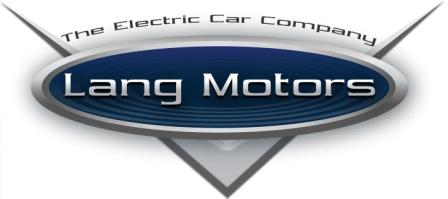
In March 2008 Lang Motors was invited and participated at a special Green Fleets meeting. The theme was Examining Electric Vehicle Options in BC, and a portion of the meeting was about “What are the barriers (objections) to accelerating faster adoption of the electric vehicles?” The following are the 8 barriers; our responses are listed in italics:
1- Regulations: difficult to overcome for Neighborhood Electric Vehicle (NEV) as there are many jurisdictions and regulators involved with the issue.
Recent regulatory changes made by the province have empowered municipalities to determine appropriateness for NEVs on their public roads. These regulatory changes are as follows:
On June 6, 2008, NEV regulations came into effect in British Columbia. Vehicles licensed and insured under this regulation no longer have to comply with the ‘slow moving vehicle’ regulation which required vehicles like the ZENN to operate with yellow flashing lights and a large triangular sign affixed to the back. To summarize the new regulations:
A definition of "neighborhood zero emission vehicles" (NZEV) was added to the Motor Vehicle Act Regulation (MVAR) - NZEV can operate on a highway with a speed limit of 40 km/hr or less OR
On municipal roads up to 50 km/h, if the municipality authorizes operation through a bylaw, OR
In unorganized areas (areas outside municipalities) on a road with a speed limit up to 50 km/h, if the Minister of Transportation issues a permit.
While this approach does involve regulators at all levels of government and therefore presents some challenges, municipalities have the opportunity to demonstrate their commitment to addressing climate change by encouraging their citizens to adopt currently available sustainable transportation solutions. Several municipalities, including Oak Bay, have already begun the process. For examples of successful integration of LSVs into a community, you need to only look south where NEVs are road legal in 44 out of 50 States.
2- There is a need for crash-tested NEV electric vehicles to be available in the marketplace.
Given that NEVs are designed for use solely within low-speed environments, the National Highway traffic Safety Administration determined that standard passenger crash testing does not apply to the low-speed vehicle class. Transport Canada granted the ZENN the National safety Mark on November 2, 2007 certifying that the vehicle meets or exceeds all the safety requirements of the class.
With regards to safety, with over 45,000 low-speed vehicles on the road across the United States produced by several manufacturers, there are ZERO associated fatalities with the class.
3- Need for more information on all electric vehicles regarding safety, performance, maintenance, and battery life.
There are several associations that can help to educate both the government and the public on electric vehicles including the Electric Drive Transportation Association (based in the United Sates) and Electric Mobility Canada. All information specified above is provided by any manufacturer of any electric vehicle.
4- Entry costs for pre-commercial electric vehicles are very high, yet trials and demos are needed to prove up the technology.
NEVs are not pre-commercial. There are over 45, 000 units currently in operation on the road in the United States. Government support is required in helping to reduce regulatory hurdles, and to encourage early adoption through consumer incentives such as offered in California. The United States has had low-speed vehicles in operation in mixed use environments for 10 years. As such, no trial or demo period is required.
5- Personnel: convincing organizations to make the investment as there are many different issues that have to be considered such as:
6- Reduces maintenance, so less service staff needed, less work.
NEVs are typically the second or third car for a private consumer. As most consumers and fleet customers will be utilizing both conventional vehicles and electric vehicles, there is an opportunity for maintenance staff to service both types of vehicles and develop the necessary skills prior to mass adoption of highway capable electric vehicles. This industry shift would take place over decades, not months and as the fundamental technology is identical in low-speed vehicles versus future highway capable models, there would be an opportunity for those individuals who wished to train themselves on electric vehicles while continuing to maintain conventional vehicles. NEVs are simply about using ‘the right tool for the right job’ and would not replace any full commercial fleet, or the ‘fleet’ of a private family.
7- Special training needed to service electric vehicles.
Lang Motors provides service training for all customers and retailers. In addition, Lang Motors would support service training to any large fleet customer as well.
8- Today, there are limited financial incentives from government, especially for commercial vehicles.
In terms of commercial or fleet adoption, NEVs present a very compelling value equation with or without government support. Fleet buyers are well-versed in sourcing vehicles based on overall or total cost of ownership versus the private consumer that tends to focus heavily on the up-front cost. When the total cost of ownership is evaluated in comparison to a conventional internal combustion vehicle, the savings are significant.
- 2007 NEV with 35 mile range eMPG = 313
- 2008 NEV with 40 mile range eMPG = 357
(eMPG = “miles per gallon equivalent”)
1- Regulations: difficult to overcome for Neighborhood Electric Vehicle (NEV) as there are many jurisdictions and regulators involved with the issue.
Recent regulatory changes made by the province have empowered municipalities to determine appropriateness for NEVs on their public roads. These regulatory changes are as follows:
On June 6, 2008, NEV regulations came into effect in British Columbia. Vehicles licensed and insured under this regulation no longer have to comply with the ‘slow moving vehicle’ regulation which required vehicles like the ZENN to operate with yellow flashing lights and a large triangular sign affixed to the back. To summarize the new regulations:
A definition of "neighborhood zero emission vehicles" (NZEV) was added to the Motor Vehicle Act Regulation (MVAR) - NZEV can operate on a highway with a speed limit of 40 km/hr or less OR
On municipal roads up to 50 km/h, if the municipality authorizes operation through a bylaw, OR
In unorganized areas (areas outside municipalities) on a road with a speed limit up to 50 km/h, if the Minister of Transportation issues a permit.
While this approach does involve regulators at all levels of government and therefore presents some challenges, municipalities have the opportunity to demonstrate their commitment to addressing climate change by encouraging their citizens to adopt currently available sustainable transportation solutions. Several municipalities, including Oak Bay, have already begun the process. For examples of successful integration of LSVs into a community, you need to only look south where NEVs are road legal in 44 out of 50 States.
2- There is a need for crash-tested NEV electric vehicles to be available in the marketplace.
Given that NEVs are designed for use solely within low-speed environments, the National Highway traffic Safety Administration determined that standard passenger crash testing does not apply to the low-speed vehicle class. Transport Canada granted the ZENN the National safety Mark on November 2, 2007 certifying that the vehicle meets or exceeds all the safety requirements of the class.
With regards to safety, with over 45,000 low-speed vehicles on the road across the United States produced by several manufacturers, there are ZERO associated fatalities with the class.
3- Need for more information on all electric vehicles regarding safety, performance, maintenance, and battery life.
There are several associations that can help to educate both the government and the public on electric vehicles including the Electric Drive Transportation Association (based in the United Sates) and Electric Mobility Canada. All information specified above is provided by any manufacturer of any electric vehicle.
4- Entry costs for pre-commercial electric vehicles are very high, yet trials and demos are needed to prove up the technology.
NEVs are not pre-commercial. There are over 45, 000 units currently in operation on the road in the United States. Government support is required in helping to reduce regulatory hurdles, and to encourage early adoption through consumer incentives such as offered in California. The United States has had low-speed vehicles in operation in mixed use environments for 10 years. As such, no trial or demo period is required.
5- Personnel: convincing organizations to make the investment as there are many different issues that have to be considered such as:
6- Reduces maintenance, so less service staff needed, less work.
NEVs are typically the second or third car for a private consumer. As most consumers and fleet customers will be utilizing both conventional vehicles and electric vehicles, there is an opportunity for maintenance staff to service both types of vehicles and develop the necessary skills prior to mass adoption of highway capable electric vehicles. This industry shift would take place over decades, not months and as the fundamental technology is identical in low-speed vehicles versus future highway capable models, there would be an opportunity for those individuals who wished to train themselves on electric vehicles while continuing to maintain conventional vehicles. NEVs are simply about using ‘the right tool for the right job’ and would not replace any full commercial fleet, or the ‘fleet’ of a private family.
7- Special training needed to service electric vehicles.
Lang Motors provides service training for all customers and retailers. In addition, Lang Motors would support service training to any large fleet customer as well.
8- Today, there are limited financial incentives from government, especially for commercial vehicles.
In terms of commercial or fleet adoption, NEVs present a very compelling value equation with or without government support. Fleet buyers are well-versed in sourcing vehicles based on overall or total cost of ownership versus the private consumer that tends to focus heavily on the up-front cost. When the total cost of ownership is evaluated in comparison to a conventional internal combustion vehicle, the savings are significant.
- 2007 NEV with 35 mile range eMPG = 313
- 2008 NEV with 40 mile range eMPG = 357
(eMPG = “miles per gallon equivalent”)






No comments:
Post a Comment